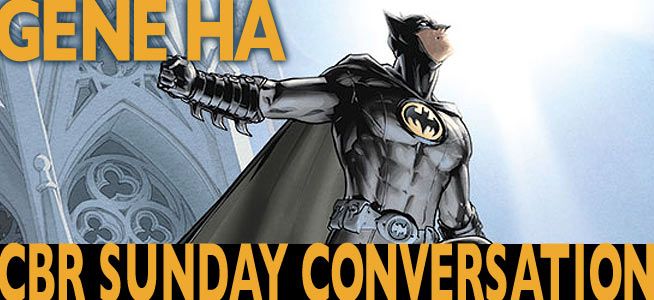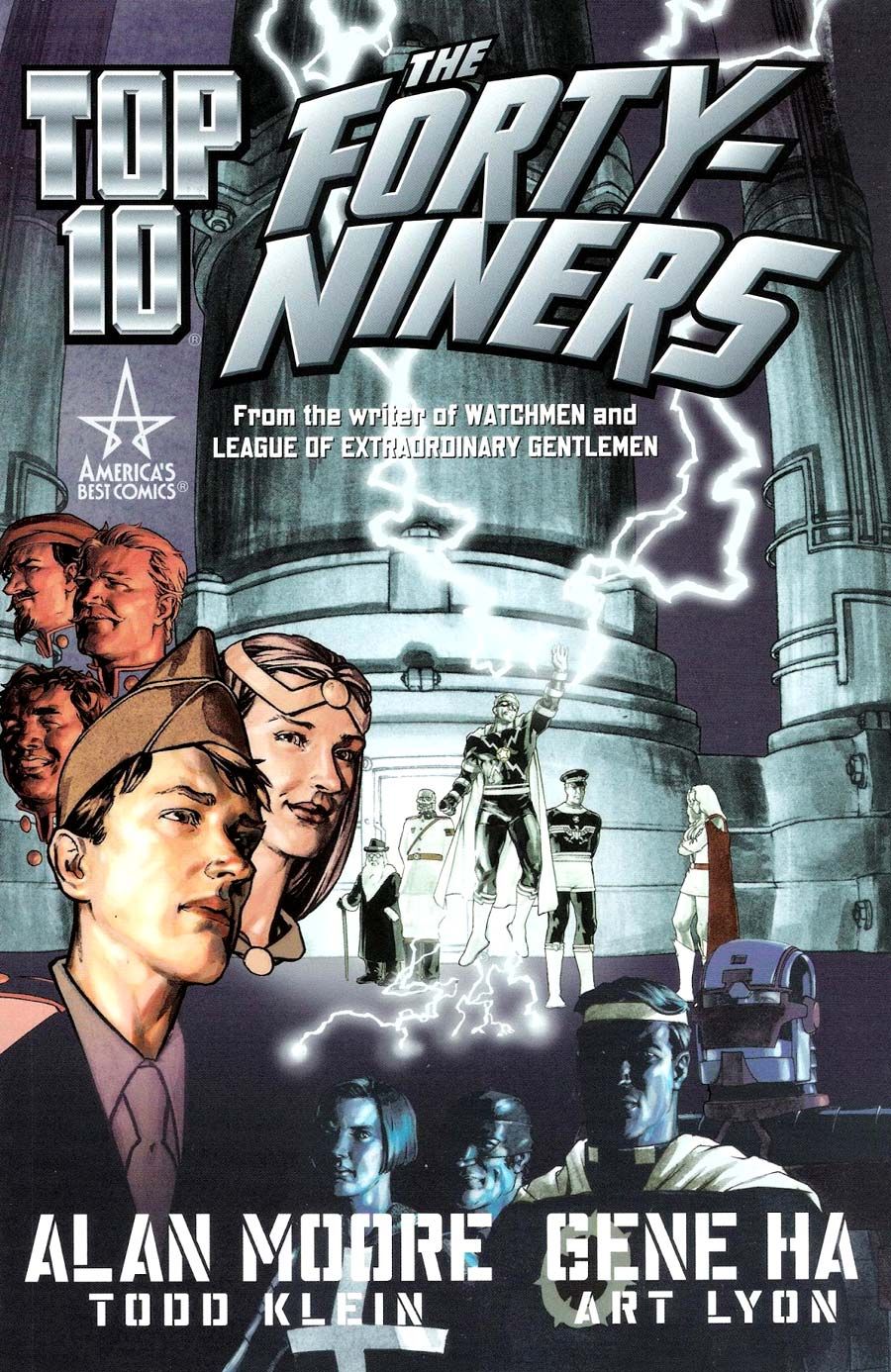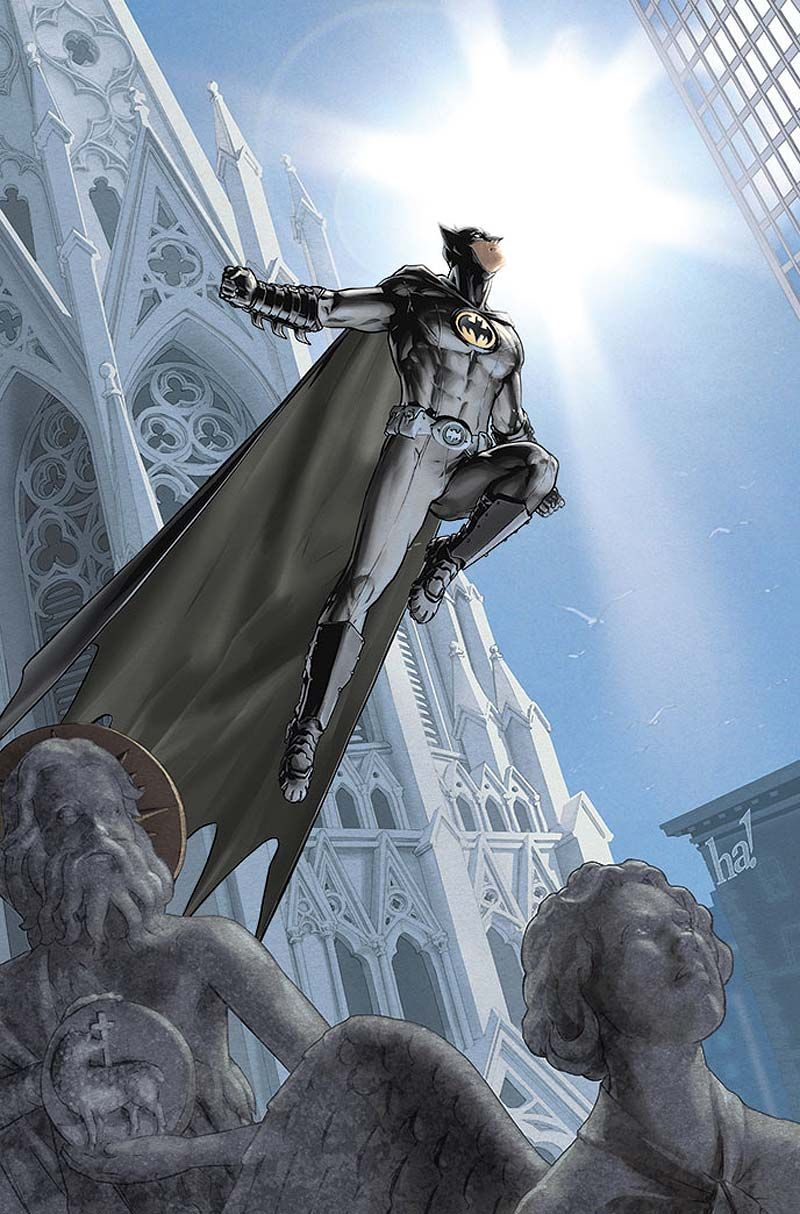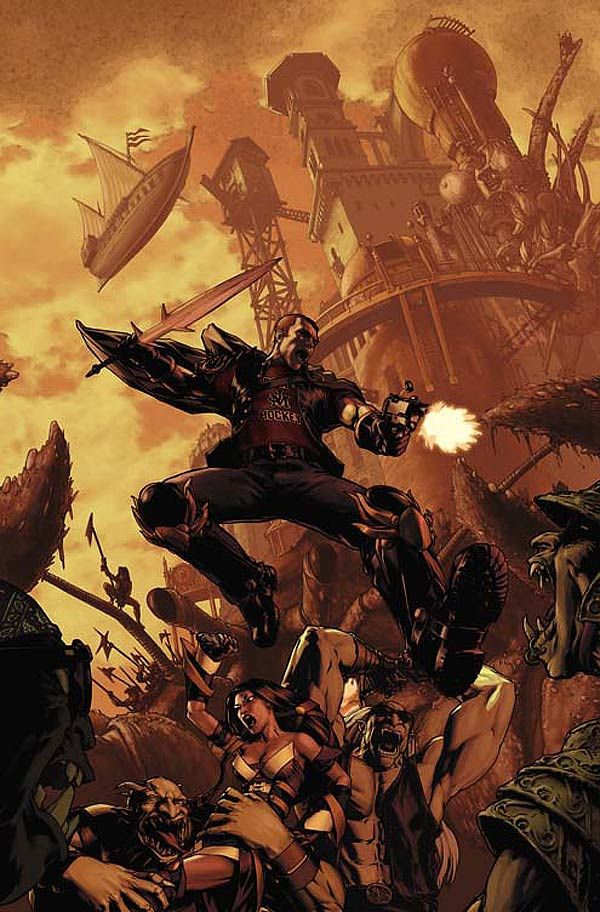SUNDAY CONVERSATION, where we speak in-depth with some of the most interesting members of the comic book community, returns to CBR this holiday weekend! These discussions run the gamut in terms of topics, from current projects to classic stories, talking trends, tastes and wherever else the conversations might lead.
ArtistGene Ha has been working in comics for 20 years. In that time, he's drawn virtually everything when it comes to superheroes, contributing to the origins of X-Men stalwart Cable to drawing virtually all of DC's top heroes with multiple stints on various Justice League books.
Born in Chicago but raised in South Bend, Indiana, the first-generation Korean-American had high expectations of a college degree and a white collar job as a doctor or a lawyer; Ha instead opted for a career in escapist fantasy -- specifically, comic books. Growing up in the 1980s, Ha was influenced by the usual suspects of Alan Moore, Frank Miller and John Byrne, along with noted independent creators such as Matt Wagner and Colleen Doran. He was that kid you remember in school that had a knack for drawing, and was prone to doing caricatures of his school teachers in the margins of his notebook paper. The budding artist got his first taste of proper recognition when he won the "Most Valuable Staffer" award for his work as a staff artist for his high school newspaper, "The Clay Colonial." When it came time to attend college, Ha ended up at Detroit's College for Creative Studies where, while in his senior year, he sent blind samples out to Marvel and DC. His Marvel rejection letter was quite harsh, but the response from DC, while harsh as well, was also encouraging. Despite the initial rejection, Ha quickly found work with the publisher and made his professional debut drawing "Green Lantern" #36 in early 1993.
In the 20 years since, this artist has won everything from the Russ Manning award for his rookie work to four Eisner Awards. Now, Ha looks to the future -- his own. Ha's best known work is arguably his partnership Alan Moore on the twelve-issue series "Top 10," which chronicles the daily lives of the police force in a city where every citizen, from the street sweeper to the civil leaders, has super powers and the costumes to match. For the past two years, Ha has worked almost exclusively with DC Comics in a self-described "pinch hitting" capacity, providing art for guest issues and fill-in work across their line. But as of this year, that's all over as Ha has quietly announced a sabbatical from work-for-hire comics to hone his skills and prepare for a long-overdue next step in his comics career: Going creator-owned.
Chris Arrant: First thing's first, Gene: what are you working on today, right this moment?
Gene Ha: Though I'm officially on sabbatical, I'm taking a break from my break to do a piece of the "Fairest" graphic novel for Shelly Bond at Vertigo. That starts tomorrow morning. Other than that, I've been doing a few pinups for friends' books, working on my house and hiring contractors. Literally six years of home repairs are hitting at once, some of which I didn't know needed doing.

What I'm supposed to be doing is sharpening my skills and starting work on a creator-owned project. I've gotten a little of that in, but not enough to announce anything yet.

Lately, comic fans have seen you act as a real utility player for DC Comics, jumping around to do an issue here and an issue there on everything from "Justice League" to "Phantom Stranger" to "Action Comics." Previously, you described this as 'pinch hitting' for DC editors. You're on sabbatical now, but how did you feel about working the way you were the last few years, and not sticking with a title for a longer run?
People often ask what DC or Marvel character I would love to work on, but that's not how I think. I have writers and editors and want to work with. If I love the writer's work and he loves the project, I'll love the project. Great writers turn boring characters into icons.
My main goal during my DC exclusive was to work with Bill Willingham and James Robinson, and I did, on "Fables" and "Shade." Then, editors like Eddie Berganza, Wil Moss and Matt Idelson dangled writers like Grant Morrison and Geoff Johns before me. How can an artist resist? I've enjoyed every book I've worked on during the last two years. The scripts were wonderful.

Your sabbatical is, as you said, intended to let you hone your skills and begin work on a creator-owned book, your first since "Oktane," I believe, back in 1995. Can you talk about your decision to break away from comics to do this?
I'd been hoping to do something creator-owned for a while. The"Back Roads" book with Bill Willingham and editor Scott Dunbier at IDW Publishing was one shot at that. When that fell apart, I didn't have any other plans, so I just homed in on a publisher that offered me great writers and a good wage: DC Comics. It didn't hurt that Bill's book, "Fables," is at the Vertigo imprint, and James Robinson and I had been planning to do a Shade origin story for years. Now that those are done, I'm ready to take a shot at something outside the Big Two.
Can you talk any kind of specifics as to this creator-owned project you're doing?
I want to get a good sized graphic novel out. Maybe it'll turn into a full time job, or maybe I'll return to contract work. I just need to give it a shot while I'm still full of passion.
This comes at the 20 year anniversary of you working in comics. How key is it for you to do creator-owned work now rather than earlier in your career?

I hope to be as creative and driven as I am now for the rest of my life, but that's a huge assumption. I just feel like this is my time to do something that's really mine; to take all the ideals and principles I believe in and put my money where my mouth is.

I think I can sum it up this way: I want to grow up to be Colleen Doran. She created "A Distant Soil" in grade school and started publishing it in high school. She fought past barriers I can scarcely imagine, and, hopefully, I'll never face. She had to deal with so many creeps. If she can create something beautiful and personal and lasting at that age, I feel like I can give it a shot at 43.
I'm singling out Colleen because she's such a singular figure, but I hold deep admiration for every comics creator who dared the market to get their book out, and to see it done right. Look at all those crazy kids making webcomics!
I'm looking forward to that future, but I want to also talk about your past. Over the course of your 20 year career, you've worked for Marvel, DC, Dark Horse and elsewhere, but DC has been by far your primary home, from your debut in 1993 to now. Why do you feel you've found yourself at DC more often than not?
It really comes down to the editors. Marvel's troubles in the 1990s meant that a lot of the editors I started off with are gone. At DC, the assistant editors I worked with on my first books are running the offices now. Heck, my first Marvel editor, Bob Harras, is DC's Editor-In-Chief!

I also love the books I've done at Marvel, but guys like Bob and Eddie are friends I've known for half my life.
I've bookmarked and shared the link foryour blog post about setting up at conventions with several people, and I marvel at the thorough and friendly way you describe things. Factoring in your support for literary and comics for kids, it made me think -- could you see yourself as a teacher, professor or guest instructor in some capacity for comics someday?

My dream retirement gig is teaching comics at Barcelona'sEscola Joso. I love Barcelona, I love working with young creators and teaching. I'll probably never sharpen my Spanish well enough, so I'd be happy to teach in the United States somewhere in a few decades. Hopefully close to a year-round beach.
That's the dream! Speaking of schools (but not beaches, unfortunately), on your website you said the only art classes you took were to learn how to draw comics, but you've developed into quite a versatile artist, working in paints, digital and traditional comics tools. Do you ever do any work outside that "comics" format, or would you like to?
I think that paraphrase is off; I've been able to use every class I've taken in my comics, one way or another. In the double page splash from DC's "Showcase '95" #11, the warped perspective is based on sine waves, trigonometry. In my pre-PC days, I crunched the numbers with a calculator and a table hand drawn on copy paper. I throw everything into my artwork! History, math, science -- everything.
I don't do it for the money, but I've done quite a few book covers for the small British games and fiction publisherPelgrane Press because I'm a fan of one of their authors,Robin Laws. I've done covers for three short story collections for theirStone Skin Press imprint,"The New Hero I and II" and the upcoming"Schemers." I've also written atabletop RPG setting, with a nice illustration for it. They use all my studies, so it's a hugely satisfying challenge. My college religious sociology class, talking to car design students, visiting my dad the doctor at the hospital, my love of cured meats.
Those sound like topics for a whole other conversation, so let's leave it with this last question: With 20 years under your belt, you've accomplished a lot in comics. What are your big goals now for the next 20 years?

I have a nice short answer for that: I don't want to be the guy who's only remembered for things he did twenty or forty years ago.





